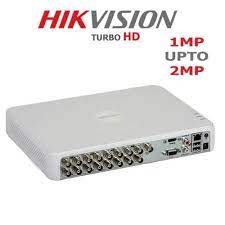Hardwired: The Reliability and Security of a Timeless Connection
In today’s fast-paced digital world, wireless technology has become the norm. From smartphones to smart homes, we rely on wireless connections for convenience and mobility. However, amidst this wireless revolution, there is still a place for the tried and true method of hardwired connections.
A hardwired connection refers to a physical connection between devices or systems using cables or wires. Unlike wireless connections that rely on radio signals, hardwired connections transmit data through a direct and dedicated pathway. This method has been used for decades in various industries and continues to offer numerous advantages.
One of the key benefits of hardwired connections is their reliability. Wireless signals can be affected by interference from other devices or environmental factors such as walls or distance. In contrast, hardwired connections provide a stable and consistent flow of data without being susceptible to external interference. This reliability is crucial in critical applications where uninterrupted connectivity is essential.
Hardwired connections also offer enhanced security compared to their wireless counterparts. Wireless networks are vulnerable to hacking attempts and unauthorized access due to their broadcast nature. On the other hand, hardwired connections are inherently more secure as they require physical access to the cables in order to intercept the data being transmitted. This added layer of security makes hardwired connections an ideal choice for sensitive information and confidential systems.
Furthermore, hardwired connections often provide faster data transfer speeds compared to wireless connections. While wireless technology has made significant advancements in recent years, it still cannot match the speed and bandwidth capabilities of a direct wired connection. This makes hardwired connections preferable in scenarios that require large amounts of data transfer or real-time communication.
Hardwired connections are widely used in various industries and applications such as telecommunications, industrial automation, security systems, audiovisual setups, and more. They are especially prevalent in mission-critical environments where reliability and security are paramount.
However, it is important to note that hardwired connections do come with some limitations. They require physical installation and may involve drilling holes or running cables, which can be time-consuming and require professional expertise. Additionally, hardwired connections lack the flexibility and mobility offered by wireless technology. Devices connected via cables are fixed in place and cannot be easily moved around like their wireless counterparts.
In conclusion, while wireless technology has undoubtedly revolutionized our connectivity, hardwired connections continue to play a crucial role in various industries. Their reliability, security, and faster speeds make them an excellent choice for critical applications where uninterrupted data transfer is vital. Whether it’s for a robust security system or a high-speed data network, hardwired connections offer a timeless connection that stands the test of time.
7 Commonly Asked Questions About Hardwired Connections: Explained
- What is a hardwired connection?
- How does a hardwired connection differ from a wireless connection?
- What are the advantages of using a hardwired connection?
- Are hardwired connections more secure than wireless connections?
- Can I convert my wireless network to a hardwired connection?
- What industries or applications commonly use hardwired connections?
- Are there any limitations or drawbacks to using a hardwired connection?
What is a hardwired connection?
A hardwired connection refers to a physical connection between devices or systems using cables or wires. It involves directly connecting devices through cables, such as Ethernet cables, coaxial cables, or HDMI cables, to establish a communication pathway. Unlike wireless connections that rely on radio signals, hardwired connections transmit data through a direct and dedicated wired connection. This method has been used for decades in various industries and applications where reliability, security, and faster data transfer speeds are essential. Hardwired connections are commonly used in telecommunications, industrial automation, security systems, audiovisual setups, and more.
How does a hardwired connection differ from a wireless connection?
A hardwired connection and a wireless connection differ in several key aspects:
- Physical Connection: A hardwired connection involves physically connecting devices or systems using cables or wires. On the other hand, a wireless connection relies on radio signals to transmit data without the need for physical cables.
- Reliability: Hardwired connections are generally more reliable than wireless connections. Wireless signals can be affected by interference from other devices, walls, or distance, leading to potential disruptions in connectivity. In contrast, hardwired connections provide a direct and dedicated pathway for data transmission, minimizing the risk of interruptions.
- Speed and Bandwidth: Hardwired connections often offer faster data transfer speeds and greater bandwidth compared to wireless connections. While wireless technology has improved significantly over time, it still cannot match the speed and capacity of a direct wired connection.
- Security: Wireless networks are more vulnerable to hacking attempts and unauthorized access due to their broadcast nature. In contrast, hardwired connections are inherently more secure as they require physical access to the cables in order to intercept the transmitted data.
- Installation and Mobility: Hardwired connections require physical installation, including running cables or wires through walls or structures. This installation process can be time-consuming and may require professional expertise. Wireless connections offer greater mobility as devices can connect without being physically tethered by cables, allowing for flexibility in device placement and movement.
- Environmental Factors: Wireless connections can be affected by environmental factors such as walls, distance, or other electronic devices operating in close proximity. Hardwired connections are not susceptible to these external factors since they rely on physical cables.
Both types of connections have their advantages and disadvantages depending on the specific use case and requirements. Hardwired connections excel in terms of reliability, security, and speed but may lack the flexibility and mobility offered by wireless technology. On the other hand, wireless connections provide convenience and mobility but may be more prone to interference and security risks.
What are the advantages of using a hardwired connection?
Using a hardwired connection offers several advantages over wireless connections:
- Reliability: Hardwired connections provide a stable and consistent flow of data without being susceptible to external interference. Unlike wireless signals, which can be affected by obstacles or environmental factors, hardwired connections offer a reliable and uninterrupted connection.
- Security: Hardwired connections are inherently more secure than wireless connections. Wireless networks can be vulnerable to hacking attempts and unauthorized access due to their broadcast nature. In contrast, hardwired connections require physical access to the cables in order to intercept the data being transmitted, providing an added layer of security.
- Faster Speeds: Hardwired connections often offer faster data transfer speeds compared to wireless connections. While wireless technology has made significant advancements, it still cannot match the speed and bandwidth capabilities of a direct wired connection. This makes hardwired connections preferable in scenarios that require large amounts of data transfer or real-time communication.
- Reduced Interference: Wireless signals can be affected by interference from other devices or neighboring networks operating on the same frequency band. With hardwired connections, there is no risk of interference from external sources, ensuring a consistent and reliable connection.
- Lower Latency: Latency refers to the delay between sending and receiving data packets. Hardwired connections generally have lower latency compared to wireless connections, making them ideal for applications that require real-time communication or fast response times.
- Greater Stability: Hardwired connections offer greater stability compared to wireless counterparts, which can experience fluctuations in signal strength or dropouts due to environmental factors or distance from the router/access point.
- Increased Bandwidth: Hardwired connections typically have higher bandwidth capacities compared to wireless connections, allowing for faster and more efficient data transmission.
- Suitable for Critical Applications: In mission-critical environments where uninterrupted connectivity is essential, such as industrial automation systems or security setups, hardwired connections are often preferred due to their reliability and stability.
Overall, the advantages of using a hardwired connection include improved reliability, enhanced security, faster speeds, reduced interference, lower latency, greater stability, increased bandwidth, and suitability for critical applications.
Are hardwired connections more secure than wireless connections?
Yes, hardwired connections are generally considered more secure than wireless connections. There are several reasons for this:
- Physical Access: Hardwired connections require physical access to the cables in order to intercept the data being transmitted. This means that an attacker would need to physically tap into the cables or gain access to the devices connected through the cables. In contrast, wireless signals can be intercepted from a distance, making them more vulnerable to unauthorized access.
- Interference: Wireless networks are susceptible to interference from other devices or environmental factors such as walls, distance, or radio frequency interference. This can potentially lead to signal loss or disruptions, making it easier for attackers to exploit vulnerabilities in the network. Hardwired connections, on the other hand, are not affected by external interference and provide a more stable and consistent connection.
- Encryption: While both wired and wireless connections can use encryption protocols for data security, hardwired connections have an advantage in terms of encryption implementation. Wired networks often use stronger encryption algorithms and protocols due to their dedicated nature and reduced risk of interception.
- Broadcast Nature: Wireless networks broadcast signals that can be detected by nearby devices, making them more susceptible to eavesdropping or unauthorized access attempts. In contrast, hardwired connections transmit data through a direct pathway without broadcasting it to surrounding devices.
- Network Segmentation: Hardwired connections allow for easier network segmentation and isolation of sensitive systems or data from the rest of the network. By physically separating critical components through wired connections, organizations can enhance security by limiting potential attack vectors.
While hardwired connections provide enhanced security compared to wireless connections, it is important to note that no system is entirely immune from security risks. Proper security measures such as strong encryption protocols, regular updates and patches, and network monitoring should still be implemented regardless of the type of connection used.
Can I convert my wireless network to a hardwired connection?
Yes, it is possible to convert your wireless network to a hardwired connection. Here are the steps you can follow:
- Assess your needs: Determine why you want to switch from wireless to a hardwired connection. Consider factors such as reliability, security, and speed requirements for your specific situation.
- Plan your network layout: Decide on the locations where you want to have hardwired connections. Identify the devices or areas that would benefit most from a direct wired connection.
- Purchase necessary equipment: Depending on the scale of your conversion, you may need Ethernet cables, switches, and other networking equipment. Ensure that you have the appropriate cables and connectors for your devices.
- Connect devices with Ethernet cables: Start by connecting one end of an Ethernet cable to the device you want to hardwire (e.g., computer, gaming console) and the other end to a network switch or router with available Ethernet ports.
- Configure network settings: If you are using a router or switch, access its configuration settings through a web browser by typing in its IP address. From there, you can assign IP addresses and configure other settings as needed for your network.
- Test connectivity: Once all devices are connected via Ethernet cables, test the connectivity by accessing the internet or sharing files between devices. Ensure that each device is successfully communicating through the newly established hardwired connection.
- Disable wireless functionality (optional): If desired, you can disable the wireless functionality on your router or access point to ensure that devices only connect through the hardwired connections.
Remember that converting from wireless to a hardwired connection may require some technical knowledge and expertise in networking setup. If you are unsure about any step or encounter difficulties during the process, it is recommended to consult with a professional IT technician for assistance.
What industries or applications commonly use hardwired connections?
Hardwired connections are commonly used in various industries and applications where reliability, security, and fast data transfer are essential. Some of the industries and applications that rely on hardwired connections include:
- Telecommunications: Hardwired connections are the backbone of telecommunications networks, including landline phone systems, fiber optic networks, and high-speed internet connections.
- Industrial Automation: Industrial control systems often utilize hardwired connections to connect sensors, actuators, and other devices for precise control and monitoring in manufacturing plants and industrial processes.
- Security Systems: Hardwired connections are widely used in security systems such as closed-circuit television (CCTV) cameras, access control systems, burglar alarm systems, and fire alarm/detection systems to ensure reliable communication and data transmission.
- Audiovisual Setups: Professional audiovisual installations like theaters, conference rooms, or recording studios often rely on hardwired connections for high-quality audio and video transmission between equipment such as speakers, microphones, projectors, and displays.
- Data Centers: Data centers require fast and secure data transfer between servers, storage devices, networking equipment, and other components. Hardwired connections such as Ethernet cables are commonly used to ensure reliable connectivity within these critical infrastructures.
- Medical Equipment: In healthcare facilities, hardwired connections are utilized for medical imaging devices (such as X-ray machines or MRI scanners), patient monitoring systems (like ECG or EEG machines), and other medical equipment that require accurate data transmission.
- Transportation Systems: Hardwired connections play a vital role in transportation infrastructure such as traffic management systems, railway signaling systems, airport control towers, or vehicle monitoring solutions for efficient communication and real-time data exchange.
- Energy Distribution: Power grids and substations heavily rely on hardwired connections to monitor electricity distribution networks accurately. This includes communication between power generation plants, transformers, distribution lines, and control centers.
- Smart Home Automation: While wireless connections are popular in smart homes, certain components like centralized control panels, security systems, or home theater setups may still utilize hardwired connections for reliability and security.
- Research Facilities: Laboratories and research facilities often require precise data collection and transmission. Hardwired connections are commonly used to connect scientific instruments, sensors, and data acquisition systems for accurate measurements and analysis.
These are just a few examples of the industries and applications that commonly rely on hardwired connections. The use of hardwired connections ensures stable, secure, and fast data transfer in critical environments where uninterrupted connectivity is crucial.
Are there any limitations or drawbacks to using a hardwired connection?
While hardwired connections offer many benefits, it is important to consider their limitations and drawbacks as well. Here are a few factors to keep in mind:
- Installation Complexity: Setting up a hardwired connection can be more complex compared to wireless connections. It may involve drilling holes, running cables through walls or ceilings, and potentially requiring professional assistance. This installation process can be time-consuming and may require expertise.
- Lack of Mobility: Unlike wireless connections, devices connected via hardwired cables are fixed in place and cannot be easily moved around. This lack of mobility can be a limitation in scenarios where flexibility and portability are required.
- Cost: Hardwired connections often require the purchase of cables, connectors, and other necessary equipment. The cost of these materials can add up, especially for large-scale installations or long distances.
- Maintenance: Over time, hardwired connections may require maintenance or repairs due to wear and tear on the cables or connectors. This upkeep may involve replacing damaged cables or fixing connectivity issues, which can incur additional costs.
- Limited Scalability: Expanding a hardwired network may involve additional installation work and cable routing. As the number of devices increases, managing the physical infrastructure becomes more challenging.
- Physical Constraints: Hardwired connections are subject to physical limitations such as cable length restrictions. Ethernet cables, for example, have distance limitations beyond which signal degradation occurs. This could impact connectivity in larger spaces or buildings.
- Susceptibility to Damage: Hardwired connections are susceptible to damage caused by factors like accidental cable cuts, environmental hazards (e.g., water damage), or physical disturbances (e.g., construction work). Such incidents can disrupt connectivity and require repairs.
- Limited Flexibility for Remote Locations: In remote locations where laying down physical cables is not feasible or practical, hardwired connections may not be a viable option.
While these limitations exist, it’s important to note that hardwired connections continue to be widely used in various industries and applications due to their reliability, security, and faster speeds. The decision to opt for a hardwired or wireless connection depends on the specific requirements and constraints of the situation at hand.




